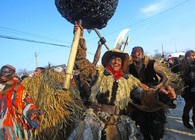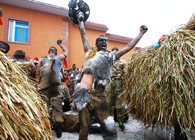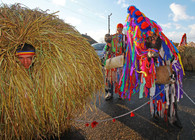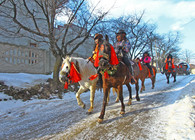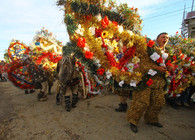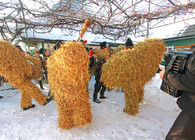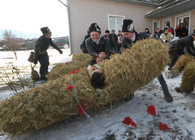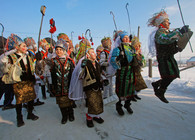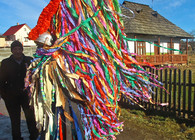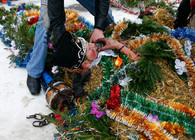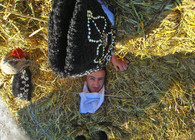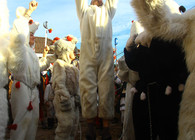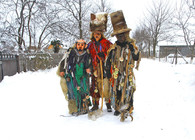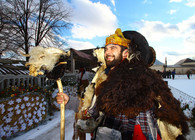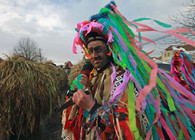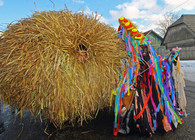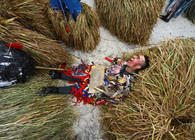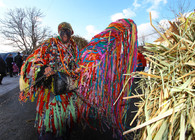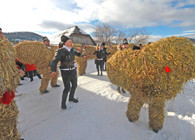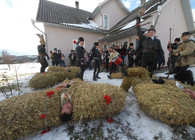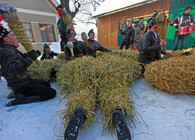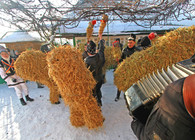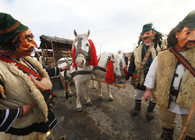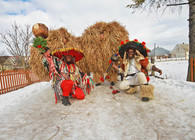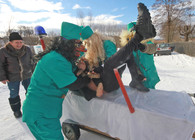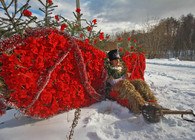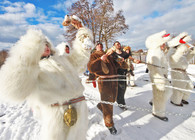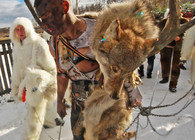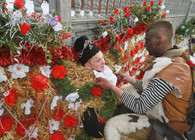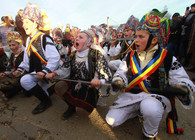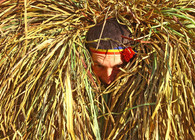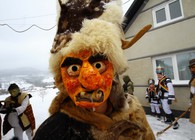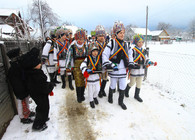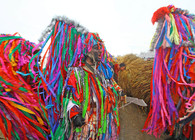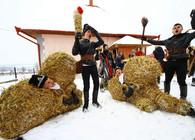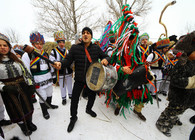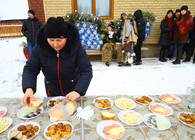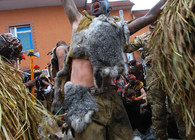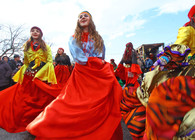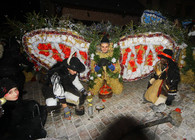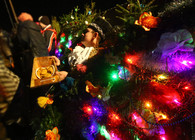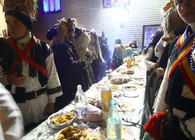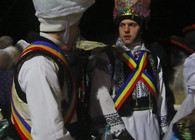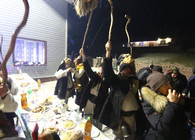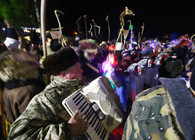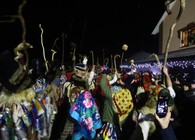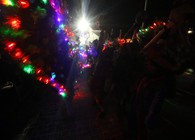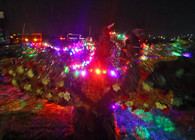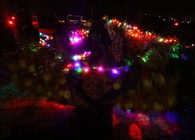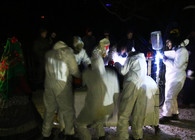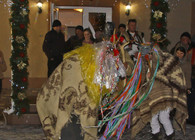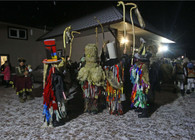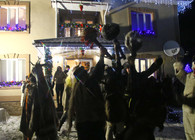Crasna Malanca

The biggest, most emotional malanca of Ukraine takes place every January 13-14 in the settlement of Krasnoilsk, near the Romanian border. The Carpathian Mountains stand for the protection of local traditions, the language around is Romanian, and celebration of malanca is so sincere that should long ago be on the List of Intangible Cultural Heritage of Humanity, such as the Carnivals in Basel or the Portuguese Podense.
Crasna Malanca is very masculine ritual and bursts out with testosterone. Its main characters are the crowned "kings and queens" ("regii si reginele") in Romanian folk costumes, "grandfather" and “grandmother” ("mosii si babele"), who hide their faces behind hand made masks and go with sticks and spinning straps, " bear” (“urs”),“gypsy”,“doctor” and “jew”. Some parts of the settlement have also "riders". A few decades ago, “devil” disappeared from the rite: it is said that the priest forbade to recreate the Evil - and the boys obeyed.
The uniqueness of the local custom is in mass, its energy and in the symbiosis of traditions: here we have symbiosis of Romanian, Austrian and Swabian customs (years ago a large German community of colonists lived here).

his Romanian song, which starts with a soulful solo on the trumpet, is known by everyone in Krasnoilsk - and considered as a hymn of the settlement. It is about the Carpathian king, the bear - black, strong, powerful, able to scare. But the man tamed the beast - and makes him jump on his command.

Surprisingly, in one locality, even if it was united in one big settlement like patchwork of several separate villages, completely different costumes continue to exist side by side. The westernmost corner of Sus is the keeper of old traditions. Malanca here has strict image - as if plastic flowers and fluorescent ribbons do not exist in the world. It's almost monochrome: the gypsies wear black. This monochrome is found in other corners only in the uniform of commanders. The "bears" have the same folk fur hats and straw wings in the shape of a heart, and an embroidered handkerchief on the chest. The maces in the hands of gypsies do not suffer from giantotomy and have a red tassel. The bears with such broad shoulders that they look like wings appear on the corner of Dial, and the longest ones grow in Trazhany. The wingspan of "paws" increases every year. A decade ago, it was an average of three meters, and now there are bears-butterflies with wings up to six meters. Such a costume weighs almost a quintal, for boys it is not easy to put it on, so after each yard "bears" need a rest. They lie down on the ground, they are offered food and something to drink. If the bear smokes, the cigarette will be raised too. To lift a winged “bear” to his feet requires the efforts of two grown men. The bear's knees in the straw pants do not bend – so “bears” are lifted immediately on straight legs. The Trajan "Gypsies" are dressed in red pants, on their heads there are bandanas.

The same story with the maces as the wings: their size in the "gypsies"' hands from Putna and Trazhany is enormous. It is no longer a mace, it is a small sun for the "bears"-satellites connected by chains. As the size increases, so does the weight of this gypsies' symbol - the masculine game of alpha males again: if you bear the largest mace - well done, you can be proud of yourself.
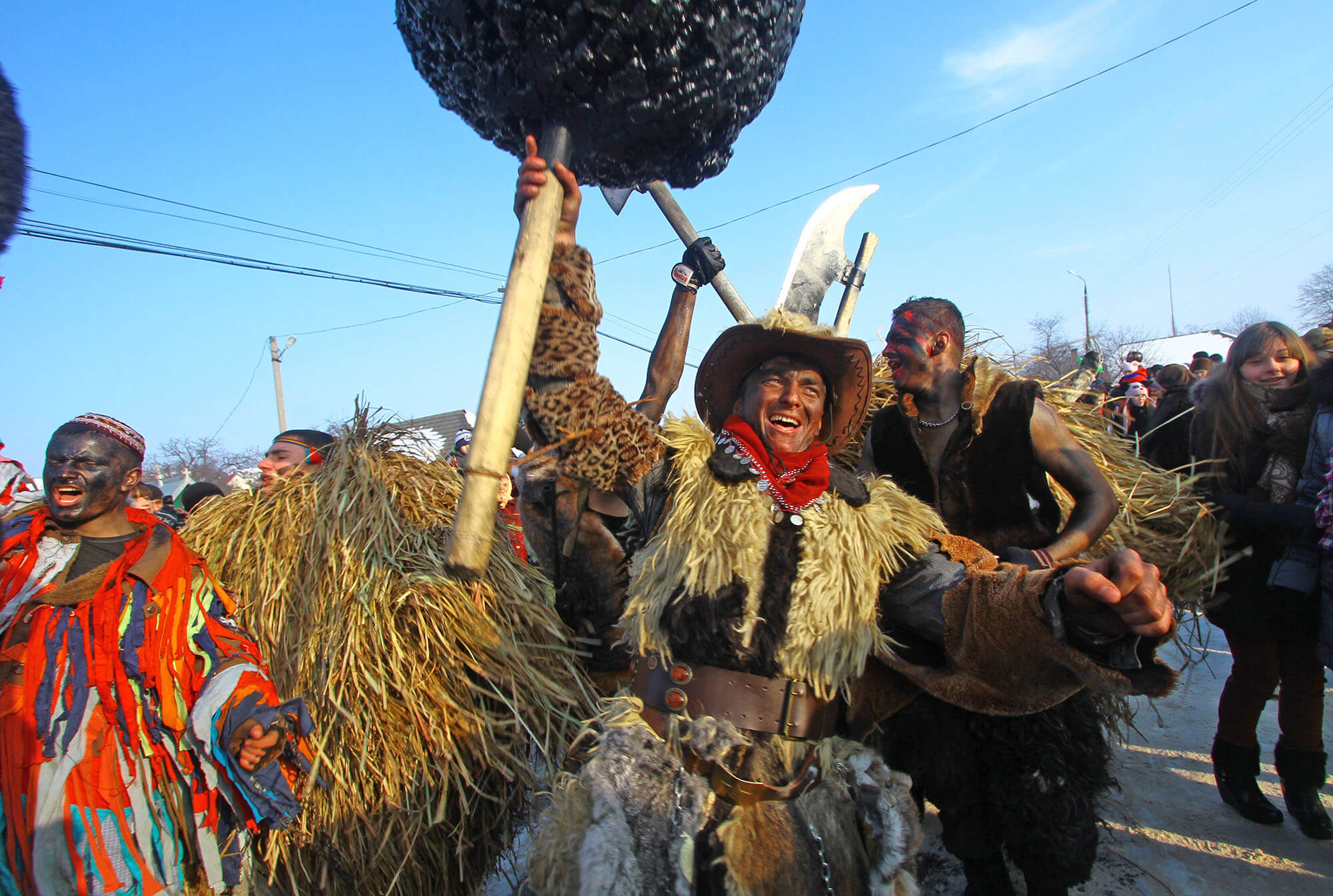
Putna Corner has straw bears that look like haystacks. Local “Gypsies” are the brightest characters in all celebration. In horned helmets, smeared with soot, in picturesque rags, hung with hides of hares, wolves and foxes (around the Carpathian forests, rich in animals) – they look like characters of heroic fantasy. The traditional costume of "Jew" is recognized by a high hat and a diplomat in his hand. The suitcase has a variety of watches, important documents or other stuff.
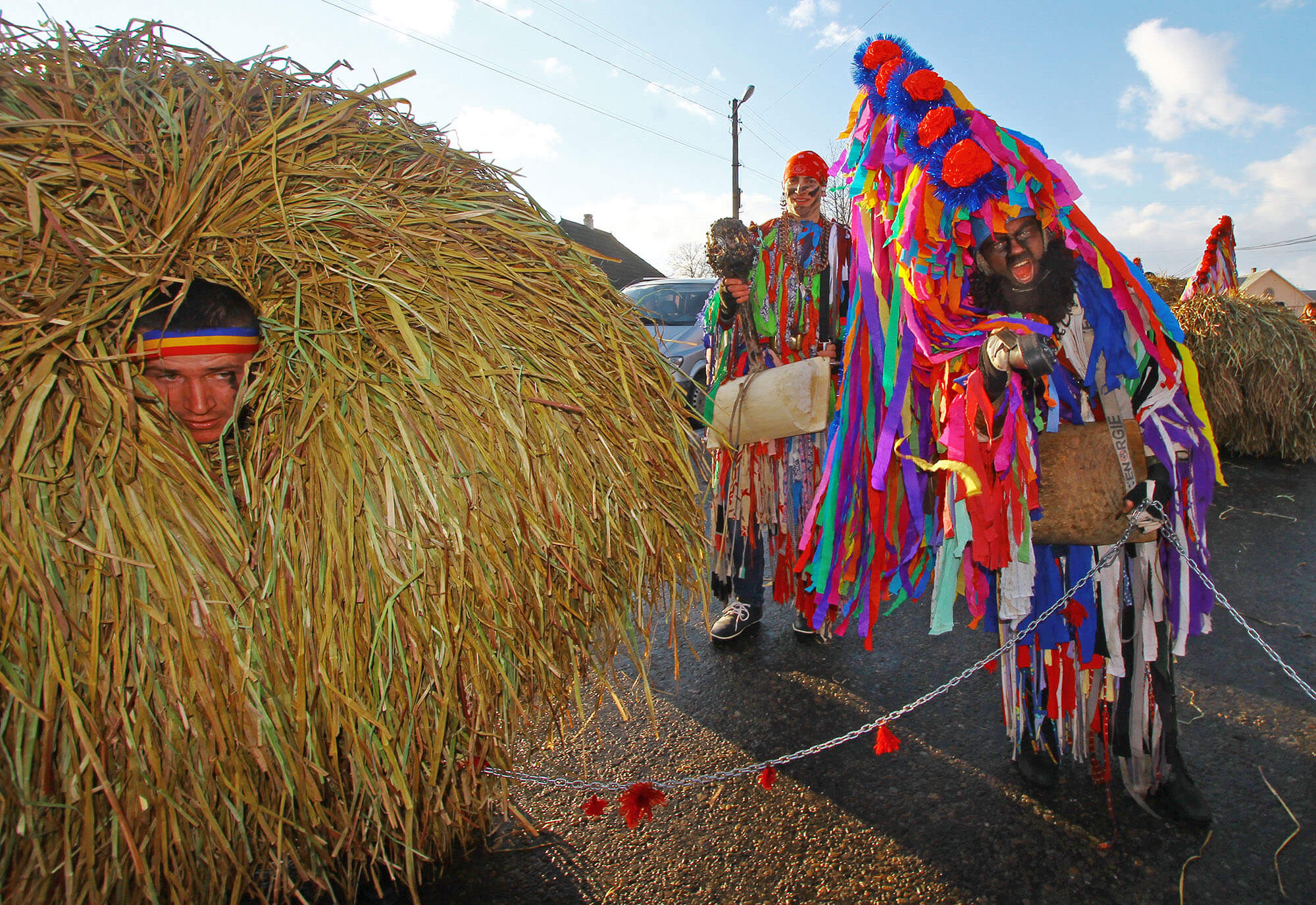
A whole line of doctors consults on the street: otolaryngologists grab viewers by the ears; gynecologists run after men with tools more familiar to women; sinister surgeons are waiting with the saws of victims near the road - and it is better not to get into the hands of "resuscitators". Another traditional feverish mask – "gypsy female", pregnant and with baby-doll on her hands. Her job is to stop the car, stick the doll under the driver's nose, explain that it's his baby - and then claim child support "on diapers." Every year malanca tries to surprise the countrymen with something new.

Men and boys decide which character they will be on the next malanca at the gatherings on St. Nicholas (December 19). On the evening of January 13, the crowds leave the village with musicians. Till the morning they sing under the windows of the local girls. On the money from malanca boys raises a feast for their girls on February 14th.
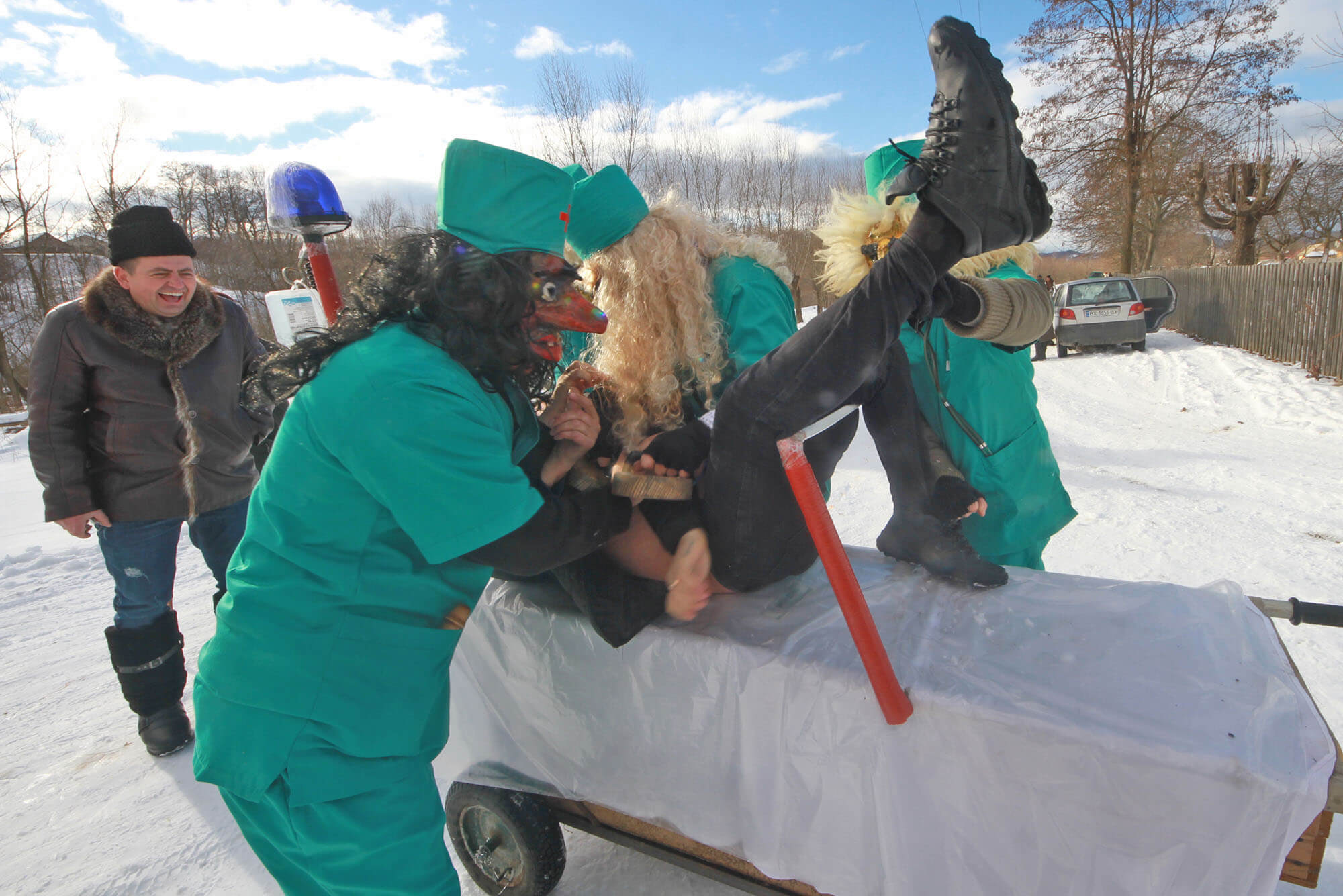
In the yard, everything is happening according to an old ritual that has not changed for decades. First the owners are congratulated with the "grandfather" and "grandmother". Then the "kings and queens" dance in a circle. Next comes the turn of the "Jews" and their wild dance. The doctors, meanwhile, are scurrying around, making small tidbits to everyone they meet. The apogee of malanca is the interaction of “gypsies” and “bears” on a yard in front of every hut. "Gypsies" hit the ground with their heavy maces - and "bears" rush at each other, begin to fight with the wild roar. “Gypsies” pacify the beasts with knives and axes. It looks pretty brutal, but if you get a close look you'll see: it's all a game, a ritual. Traditions are nurtured here. To be in malanca is a honor. But even if you are not into it, no one will forbid you to sing a song about a bear. T
















